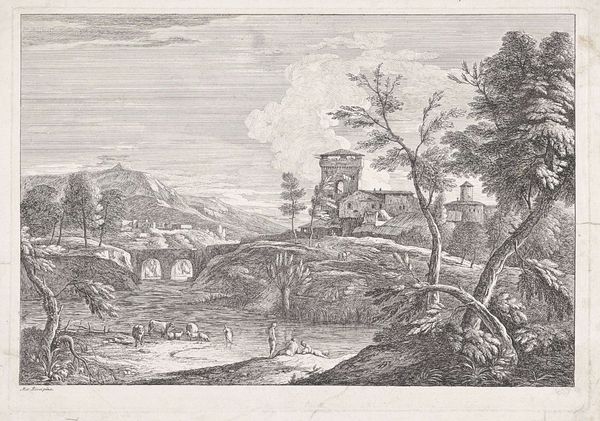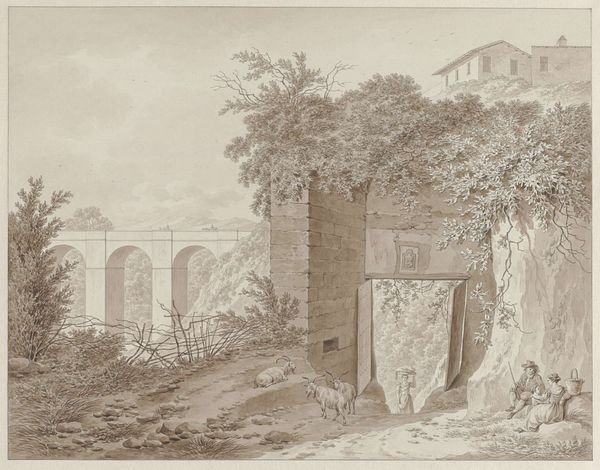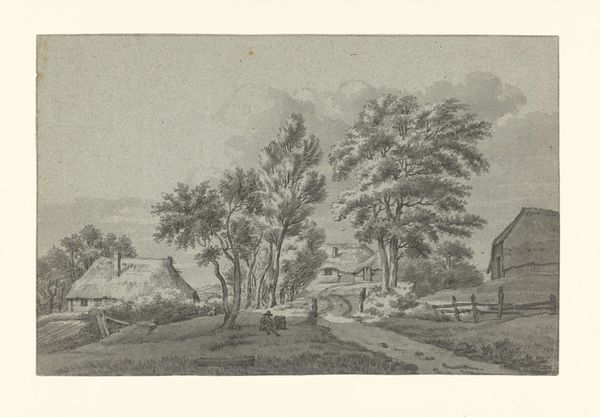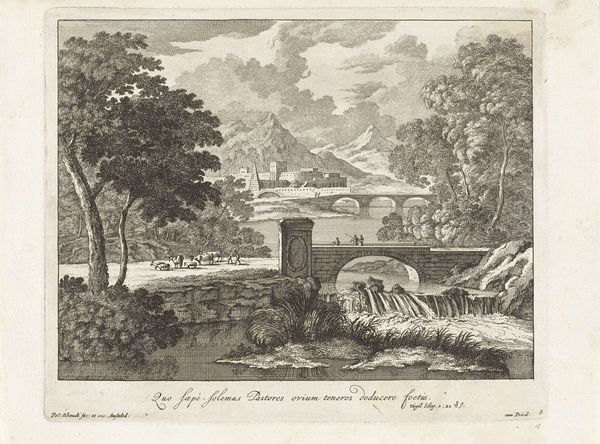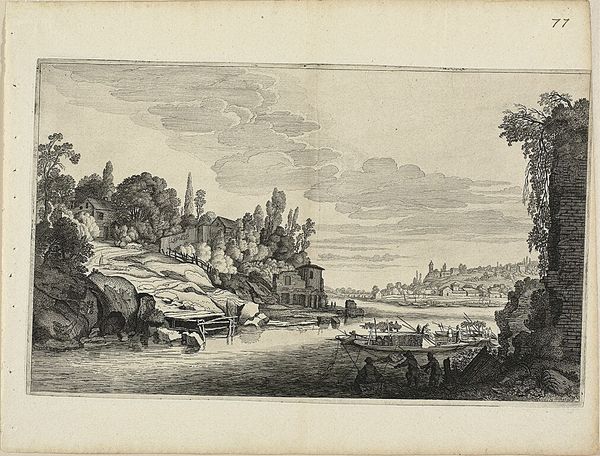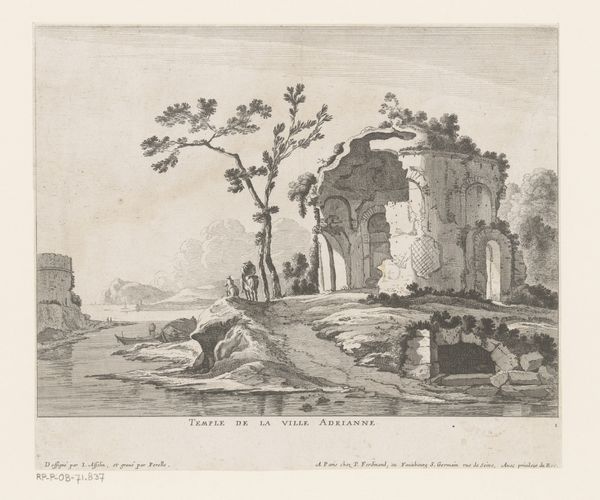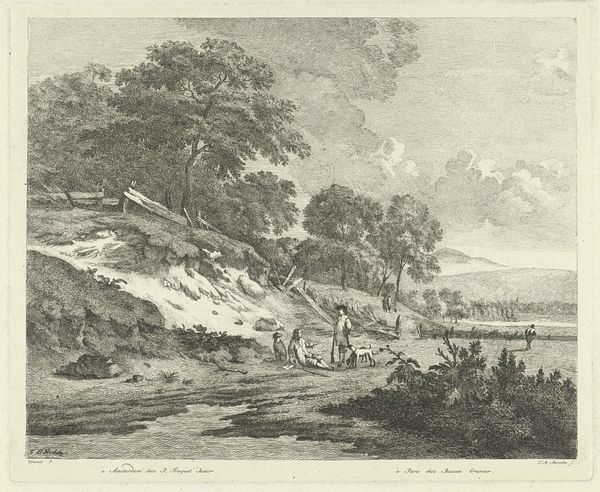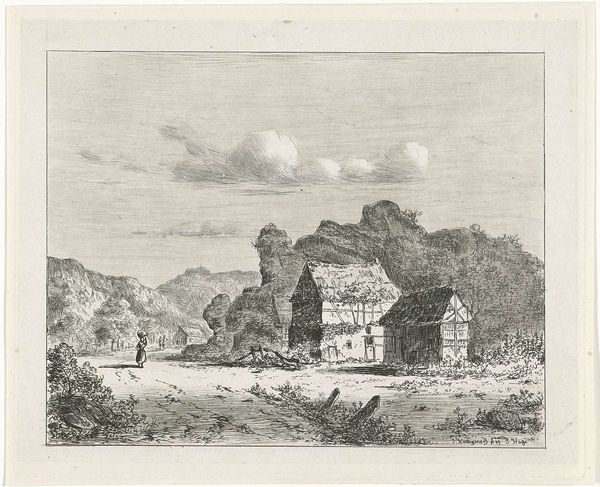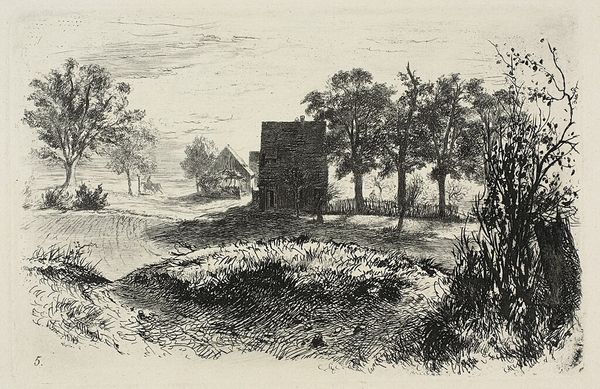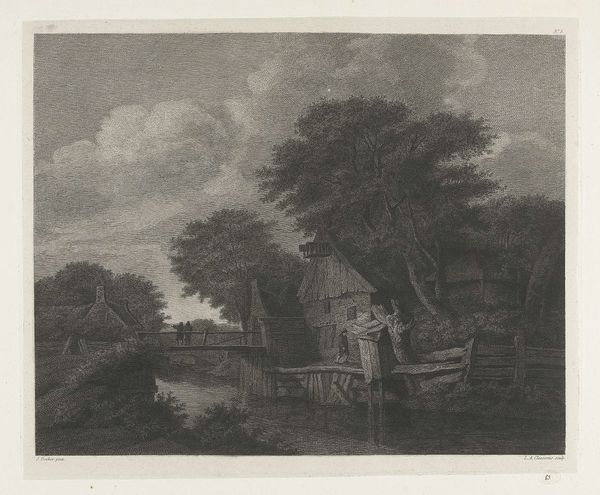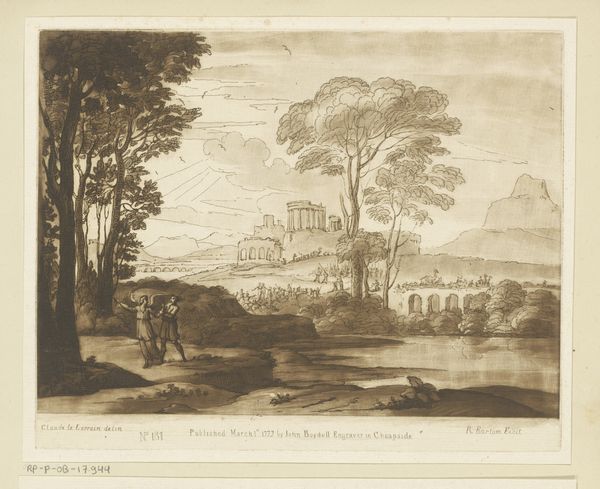
drawing, etching, paper, ink
#
drawing
#
etching
#
landscape
#
paper
#
ink
Dimensions: height 115 mm, width 143 mm
Copyright: Rijks Museum: Open Domain
Editor: So, here we have Isaac Weissenbruch’s "Landschap met een brug," created sometime between 1836 and 1912, and residing here at the Rijksmuseum. It’s an etching in ink on paper and really captures a very still and quiet rural scene. What compositional elements do you find most striking in this piece? Curator: Well, first consider the artist's management of light and shadow. Note how the textures vary. Observe the consistent use of vertical lines in the etching, the density differs between the foliage and the reflection on the water. Editor: The bridge almost seems to be the visual anchor, doesn't it? It creates this strong foreground against the softer background. Is there any sort of intention or theme when observing a recurring form within the picture frame? Curator: Absolutely. Repetition creates rhythm. Consider how Weissenbruch orchestrates form. Look closely at how he repeats arch-like structures throughout— the bridge's arches are echoed in the trees’ shapes and clouds beyond, which harmoniously connect the disparate parts of the landscape. Editor: That's a point! So it is less about what is in the picture, than how the elements speak to each other visually. Curator: Precisely. It's the dialogue between these formal elements that shapes our reading and enriches the viewing experience, guiding how we construct its meaning based on its aesthetics. Editor: I never thought about the interplay of vertical lines as part of the landscape's essence here, that has enriched my appreciation. Thank you for sharing the formal considerations, curator. Curator: Indeed. This work serves as a profound testament to the latent visual possibilities present within the framework of landscape art itself.
Comments
No comments
Be the first to comment and join the conversation on the ultimate creative platform.
